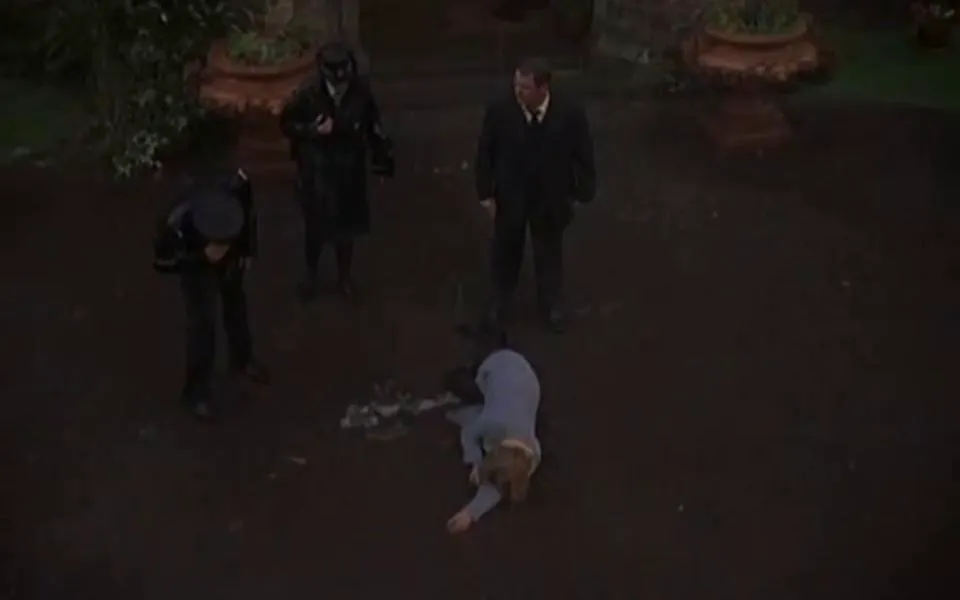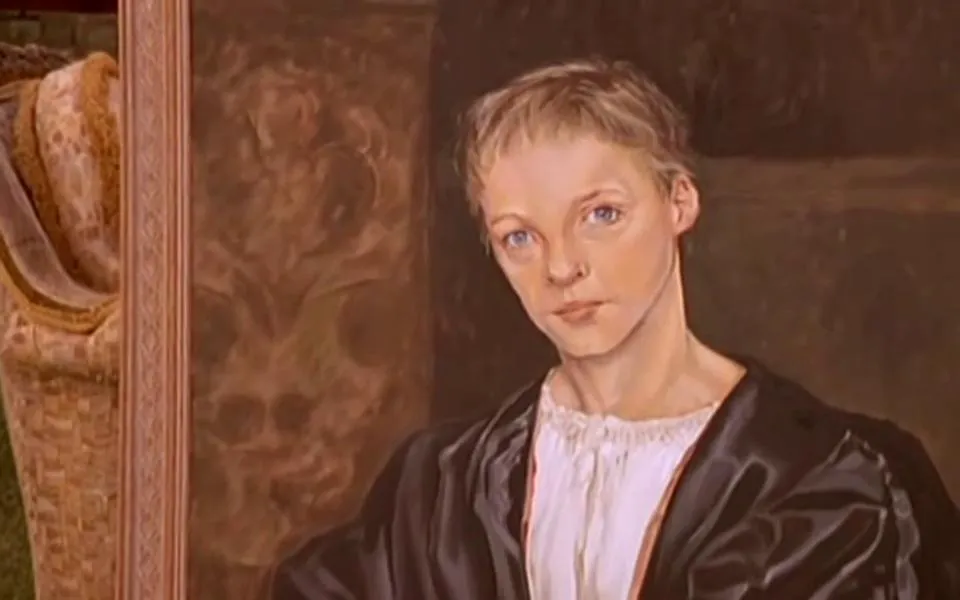I’ve been watching the first season of Midsomer Murders in fits and starts.
Let’s start by highlighting the main character, Barnaby, and his sidekick, Troy. These two seem to have a penchant for piecing together clues and deducing the truth while in their car.
Generally speaking, most detective dramas follow a certain logic: everyone who appears at the beginning has some significance, even if it’s just a fleeting glimpse or a name dropped in conversation.
This can be quite challenging for those of us who struggle with facial recognition. As a result, I often find myself watching each episode at least twice to fully grasp all the subtle hints the director has laid out.
With a fairly large cast of characters in each episode, I’ve found it helpful to create a “rogues gallery” of headshots with names attached. That way, when a character reappears and I can’t quite place them, I can quickly reference my visual guide.
Diving into the Episodes
Episode 1: “The Killings at Badger’s Drift”
For me, this was the standout episode of the entire first season. The plot is logically sound, with all the clues presented clearly. Yet, the killer remains elusive. The clues are there, but it’s not until Barnaby reveals the truth that everything clicks into place.
Set in a quaint village, this episode features a diverse cast of characters, young and old, male and female, with varying hairstyles. Their appearances are staggered, with characters being introduced through conversations and interactions. This gradual approach prevents the overwhelming feeling of being bombarded with unfamiliar faces.
This makes the story easier to follow, with a clear structure and logical progression.
There are a few moments that particularly stood out:
- The elderly woman who appears so content and full of life. The fact that such a delightful and spirited character becomes a victim only amplifies the brutality of the killer.
- The brother, one of the killers, receiving a tip-off from the nanny that their secret is out. His desperate run to find his sister is visually striking, conveying a sense of impending doom.
- The siblings’ secret hideout, the place where everything is exposed and ultimately ends. Stripped of its context, the location itself is quite picturesque, almost like a painting.
Episode 2: “Written in Blood”
With only six main characters, this episode is relatively easy to keep track of.
Honoria’s obsession is a major giveaway, and it’s not hard to deduce that the killer’s motive revolves around her brother. The killer is fixated on collecting everything related to him, including his widow.
On my first viewing, I didn’t fully understand the ending. It wasn’t until the second time that I realized the killer was waiting for the widow to die, given that her brother succumbed to a contagious disease.

While the suspense is minimal, the scene where Barnaby discovers the London apartment is particularly well-crafted. The combination of music, visuals, and sound creates a sense of déjà vu, allowing the viewer to piece together the victim’s life alongside Barnaby.
And the painting! It may not have seemed significant at first, but it becomes clear that every shot is deliberate. (The painting was briefly shown during the moving scene earlier in the episode.)

Of course, Max’s lack of professional ethics ultimately backfires. This highlights the importance of ethical guidelines, as the consequences of disregarding them can be dire.
The episode’s title is fitting, as Max’s bestselling book is indeed “written in blood.” Firstly, the author profits from exploiting the tragic past of others. Secondly, writing the book leads to his own demise.
Episode 3: “Death of a Hollow Man”
I found the logic in this episode somewhat questionable:
- The motive for Agnes’s murder is vague and unclear. While it’s possible to make an educated guess, it’s not entirely satisfying.
- Esslyn’s death is also bizarre. Why replace the razor twice? Why not simply use a substitute and remove the original prop altogether? Why put the original back?
- What is the killer’s motive for all this elaborate scheming? Is it solely for the sake of his theater career? The logic feels flimsy. Is that why the killer ultimately goes insane?
The characters in the theater troupe are also peculiar:
- One half of the bookstore duo suddenly has an affair with Kitty, with little explanation.
- As for Kitty, she initially seeks out her lover but gives up after seeing the bookstore duo embracing? That’s a rather abrupt change of heart.
- Agnes, believing she’s dying, turns to religion, presumably seeking redemption. But why leave the bills for her cousin? Doesn’t she understand Esslyn’s character? In a way, she indirectly causes his death. Is this another form of atonement?
Overall, this episode is strange and unsatisfying.
Episode 4: “For Better, for Worse”
The episode opens with the detective’s wife and daughter browsing a pottery stall. Sarah, the woman running the stall, is only mentioned by name and shown in a few fleeting glimpses. Even in the crowded tea tent, she’s only seen in profile. Who would have guessed that this character would turn out to be one of the conspirators?
As for Simone, the mastermind, she’s given a few initial scenes, but the audience’s attention is primarily focused on her husband. After those initial scenes, Simone is only mentioned in conversations, perfectly playing the role of a kidnapped victim until the truth is about to be revealed.
The actress couple is another red herring. They seem to be constantly watching their neighbors, making them appear suspicious. It’s only later that we discover they’re growing marijuana. Poor Barnaby is even tricked into eating a pot brownie, leading to his bizarre behavior.
The dramatic entrance of Gray and his father also serves to mislead the audience. Gray is simply a philandering playboy, and his father is there to confirm the source of Gray’s £20,000.
In reality, it’s possible to guess the mastermind from the beginning, although the details remain elusive. It’s hard to imagine that a former boyfriend would suddenly appear as an accomplice.
Overall, the episode’s title is quite fitting. Love can lead someone to take the blame for everything, while a lack of love can lead to betrayal.
Episode 5: “Death’s Shadow”
The story is triggered by an accident, and the arrival of unexpected guests disrupts the peace of a local inn. The inn’s inhabitants all have their own little secrets, but for the most part, they are good people. Those secrets, however, become obstacles in the path to uncovering the truth.
The two detectives are constantly working to unravel the tangled web of clues. As a viewer, the story feels fragmented. Each character’s secret seems largely unrelated to the murder. The detectives rely heavily on eliminating irrelevant leads.
Once the misleading clues are discarded, the main plot becomes simpler. If the imposter Chris’s identity hadn’t been discovered by chance, the truth might have remained hidden. The discovery feels too coincidental, making it seem like the police are solving the case purely by luck. Some characters, like the blonde, seem superfluous. Her only purpose is to show the police her gold-threaded bag. Suhami’s mother is simply there for comic relief.
Recurring Tropes
After watching these five episodes, I’ve noticed some recurring stereotypes:
- Wealthy housewives are always portrayed as alcoholics, drinking heavily even during the day.
- Any formal gathering must include a performance of “Carmen.”
- Middle-aged couples are either cheating on each other, or both are having affairs.
- Young women are always willing to abandon everything for love.
- Young men are either driven by love or money, and those driven by money are often the killers.
- There are always a few spinsters who have lived alone their entire lives.
- There are always a few people who are obsessed with observing their neighbors and know everything about their lives.
After watching enough British dramas, you start to recognize these familiar character types.
Midsomer Murders S1E01: “The Killings at Badger’s Drift”
Midsomer Murders S1E04: “For Better, for Worse”
Midsomer Murders S1E05: “Death’s Shadow”